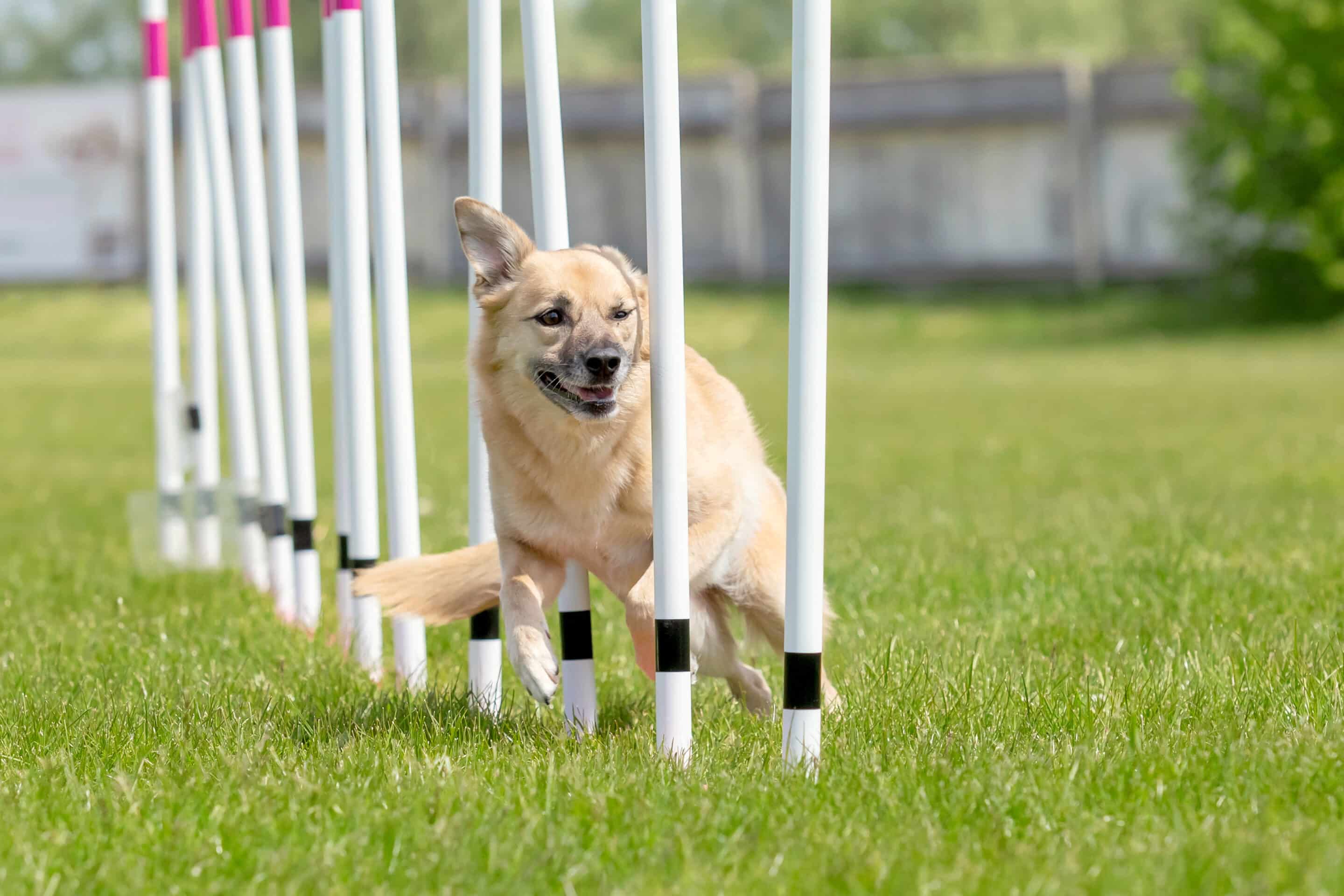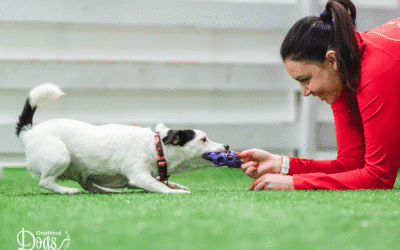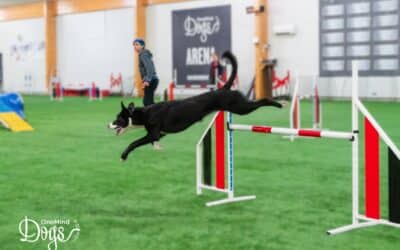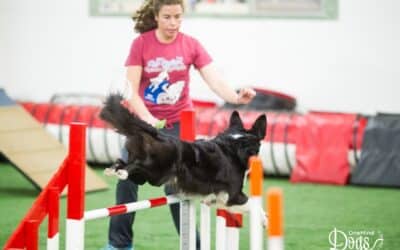Wondering if you can really make progress when training dog agility by yourself, without access to a club or coach?
The answer is yes. In fact, training dog agility by yourself can be one of the most rewarding and effective ways to grow as a team with your dog.
In the free OneMind Dogs webinar Succeeding in Dog Agility: How to Train Effectively by Yourself, OneMind Dogs Coach Niki Drage shares her best tips and personal experience from over 20 years of training and competing with dogs. Whether you’re new to agility or looking to sharpen your skills, this 40-minute on-demand webinar will help you build confidence in your solo sessions.
Why training dog agility by yourself works
When Niki first started out, she trained at clubs with various instructors, but something was always missing. The methods didn’t fit her style, and the feedback didn’t always support her dog’s learning. When she discovered OneMind Dogs and started training alone, everything changed.
Training alone gave her the freedom to:
- Choose a method that felt right
- Move at her own pace
- Focus fully on her dog’s progress
- Get meaningful feedback by watching video and listening to her dog
Solo training also removed the pressure of performing in front of others. No need to repeat exercises for the sake of proving a point. It became all about what was best for the dog.
How to stay motivated while training agility by yourself
Staying motivated is one of the biggest challenges when training alone. Without a structured class or instructor waiting, it’s easy to lose focus. Here’s how Niki and her students stay inspired and on track.
Learn something new about your dog
When you work alone, you start noticing the finer details. You’ll see whether your dog prefers slicing or wrapping a jump. You can experiment with how close your dog likes you to run, and if they prefer turning away from you or towards you. Watching videos of your sessions can uncover patterns you might otherwise miss.
Keep a training diary
Tracking your sessions helps you see what’s working and what needs more attention. You can set yearly goals, plan sessions for the week, and even record competition faults to guide your training focus.
Join a guided online course
OneMind Dogs offers Guided Courses online, designed specifically for solo handlers. You can get coaching feedback, train alongside other students, and learn at your own pace.
Use social sharing for accountability
Some students create a private Instagram account or join Facebook groups to post training videos. The small act of uploading a video can be just the nudge you need to stay consistent.
Building routines for training dog agility by yourself
You don’t need an agility field to make progress. Niki recommends short, focused sessions that fit easily into your day.
- Use part of your dog’s breakfast as training rewards
- Add five minutes of skill work during a walk
- Use chairs, trees, or bins as makeshift equipment
- Keep sessions short and purposeful
Aim for one skill per session. Track your progress and move on when your dog clearly understands the task.
Making training fun for both of you
Fun is not a bonus. It’s the key to learning.
Whatever your dog loves most, whether it’s food, toys, chasing a ball, or even herding another dog, use that as a reward. Don’t copy someone else’s reward strategy. Do what works for your dog.
Watch for signs of over-arousal or boredom. If your dog starts biting treats too hard, ignoring known cues, or looking away, it’s time to take a break.
Celebrate the small wins. If your dog finally gets a tricky skill, turn it into a party. Play, praise, and let them know you’re proud. These moments build value for training and strengthen your bond.
How to get feedback without a coach
Video is your best friend when training dog agility by yourself. Find out more in our online learning theme: Training agility by yourself.
Watching recordings of your sessions reveals subtle details like timing, body position, and how your dog reads your cues. If your dog keeps making the same mistake, consider it feedback that something needs adjusting.
Try watching your video in slow motion or comparing it to an instructional clip. If you’re still unsure, send it to a coach. OneMind Dogs Premium members get access to personal video reviews and feedback from instructors.
Progressing skills when training dog agility by yourself
It’s easy to fall into the habit of repeating what works. But progress comes from small challenges.
Here’s how to keep things moving forward:
- Fade props or guides systematically
- Add distractions or distance
- Take the same skill to a new location
- Change your reward placement or handler movement
Each small variation helps your dog generalize skills and prepare for real-world situations. Don’t be afraid to test your limits, and ask for help if you feel stuck.
Watch the webinar recording for more fun ideas!
Replicating competition environments in solo training
If you’re preparing to compete, creating trial-like conditions at home is essential. You won’t have a crowd or judge in your backyard, but you can create pressure in other ways.
Try these ideas:
- Go live on Facebook or film your session in one take
- Train with small stakes or personal challenges
- Practice clean run challenges where one error sends you back to the start
- Add noise, movement, or another dog as a distraction
- Stick to your trial-day routine: lead removal, reward timing, and startline behavior
These techniques help both you and your dog get used to performing under pressure.
Starting from scratch? You can still train by yourself
You don’t need years of experience or a full agility setup to get started. The Foundation for Agility program by OneMind Dogs is designed for beginners and requires little to no equipment.
Start with simple skills that develop your dog’s focus, body awareness, and response to handling cues. Most exercises can be done with a cone, a chair, or a food bowl.
It’s not about teaching the obstacles first. It’s about preparing your dog with the core skills that make obstacle training easier later on.
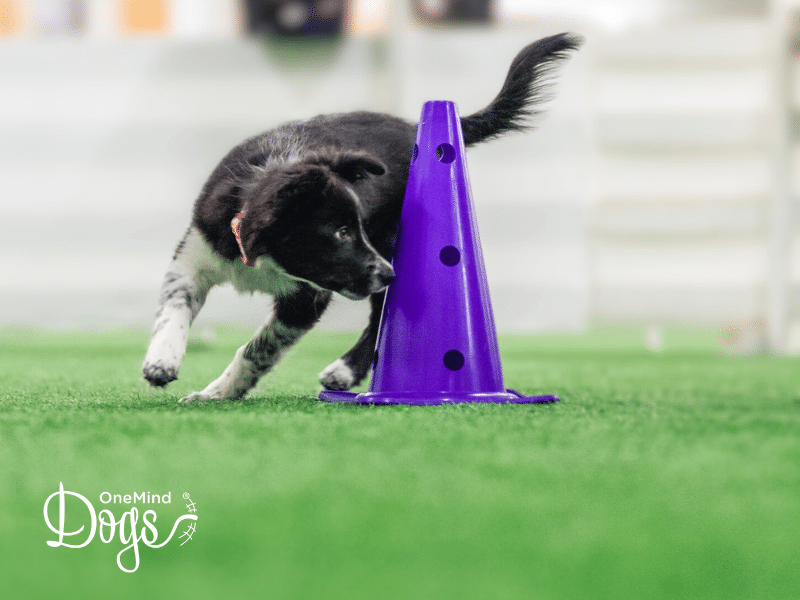
Choose a method and stick with it
The best advice Niki gives for anyone training dog agility by yourself is to find a method that resonates with you, and stay with it. Jumping between techniques and programs can confuse both you and your dog.
When you’re learning alone, simplicity and consistency matter. If something isn’t working, it doesn’t mean the method is broken. It means something needs adjusting. That’s where feedback and community support make a huge difference.
Take the next step
You don’t need a big training field, fancy gear, or a local club to succeed in agility. All you need is a dog, a bit of curiosity, and a commitment to have fun.
Start now by watching the free webinar:
🎥 Succeeding in Dog Agility: How to Train Effectively by Yourself
Then explore the Training by Yourself learning theme on the OneMind Dogs platform to dive deeper into guided lessons, coaching support, and examples of real training setups.
